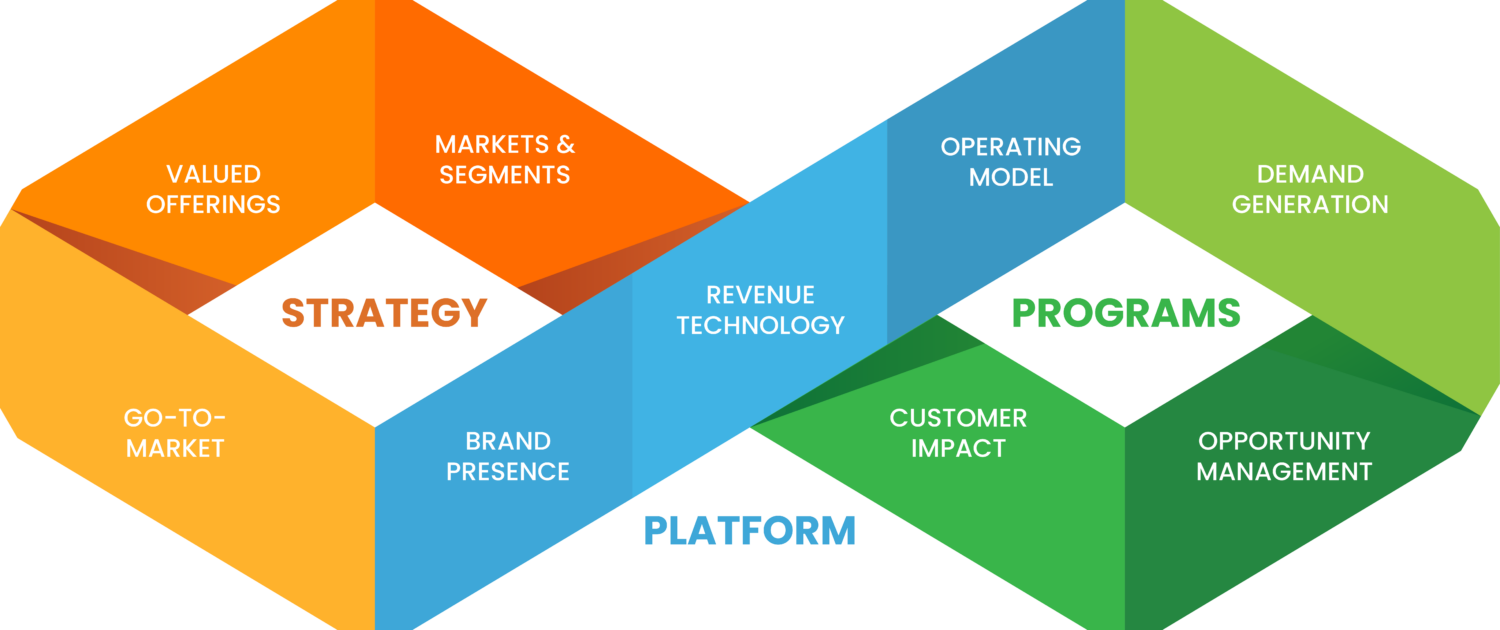Revenue Architecture Methodology™
Your Blueprint for Predictable Growth
The Revenue Architecture Methodology™ is our proprietary framework designed to drive accelerated, predictable, and sustainable revenue growth. It provides a comprehensive blueprint for maximizing revenue potential by strategically aligning customer segments, brand and operational foundations, and full-funnel marketing and sales execution. The methodology is structured across three key layers and nine interconnected dimensions:
Define Your Path to Growth.
This foundational layer establishes the vision and strategic direction for your revenue generation efforts.
Build Your Operational Foundation.
This layer integrates the essential elements that support and enable revenue-generating activities.
Drive Engagement and Conversion.
This execution layer activates programs to attract, engage, convert, retain, and expand customers.
Revenue Architecture™ is an ongoing process to align marketing and sales efforts with the evolving business model. This dynamic alignment ensures accelerated, predictable, and sustainable revenue performance through a strategy-driven and technology-enabled framework with critical capabilities and an enabling platform for consistent execution.
